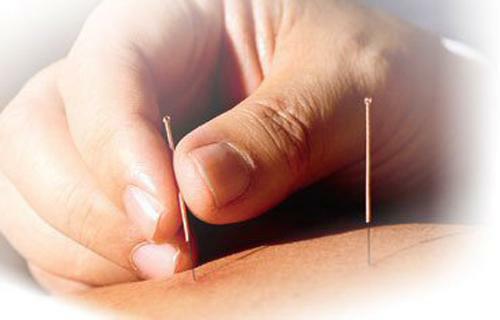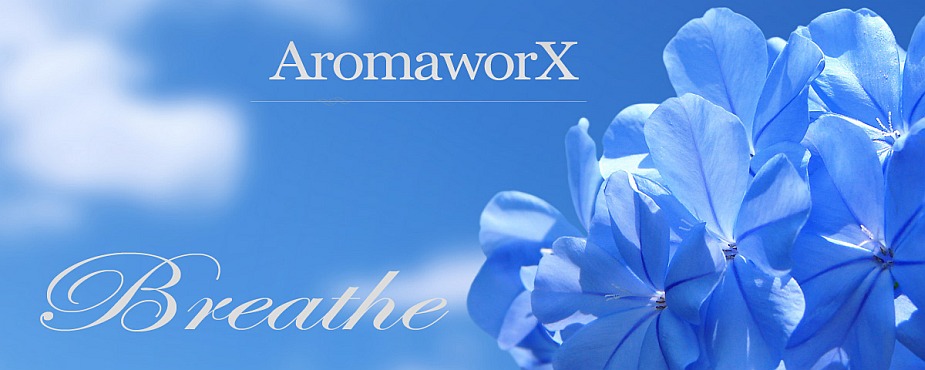This article was posted by CrystalWind.ca.
Acupuncture - A Primer
- Details

Acupuncture is a treatment based on Traditional Chinese Medicine (TCM), a system of healing that dates back thousands of years. At the core of TCM is the notion that a type of life force, or energy, known as qi (pronounced "chee") flows through energy pathways (meridians) in the body.
Each meridian corresponds to one organ, or group of organs, that governs particular bodily functions. Achieving the proper flow of qi is thought to create health and wellness. Qi maintains the dynamic balance of yin and yang, which are complementary opposites. According to TCM, everything in nature has both yin and yang. An imbalance of qi (too much, too little, or blocked flow) causes disease. To restore balance to the qi, an acupuncturist inserts needles at points along the meridians. These acupuncture points are places where the energy pathway is close to the surface of the skin.
What is the history of acupuncture?
The earliest recorded use of acupuncture dates from 200 BCE. Knowledge of acupuncture spread from China along Arab trade routes towards the West. However, up until the early 1970s, most Americans had never heard of acupuncture.
Acupuncture gained attention in the United States when President Nixon visited China in 1972. Traveling with Nixon was New York Times reporter James Reston, who received acupuncture in China after undergoing an emergency appendectomy. Reston was so impressed with the post-operative pain relief he experienced from the procedure that he wrote about acupuncture upon returning to the United States.
In 1997, the U.S. National Institutes of Health formally recognized acupuncture as a mainstream medicine healing option with a statement documenting the procedure’s safety and efficacy for treating a range of health conditions. While awareness of acupuncture is growing, many conventional physicians are still unfamiliar with both the theory and practice of acupuncture.
How does acupuncture work?
The effects of acupuncture are complex. How it works is not entirely clear. Research suggests that the needling process, and other techniques used in acupuncture, may produce a variety of effects in the body and the brain. One theory is that stimulated nerve fibers transmit signals to the spinal cord and brain activating the body’s central nervous system. The spinal cord and brain then release hormones responsible for making us feel less pain while improving overall health. In fact, a study using images of the brain confirmed that acupuncture increases our pain threshold, which may explain why it produces long-term pain relief. Acupuncture may also increase blood circulation and body temperature, affect white blood cell activity (responsible for our immune function), reduce cholesterol and triglyceride levels, and regulate blood sugar levels.
What does an acupuncturist do?
In addition to asking questions, the acupuncturist may want to take your pulse at several points along the wrist and look at the shape, color, and coating of your tongue. The acupuncturist may also look at the color and texture of your skin, your posture, and other physical characteristics that offer clues to your health. You will lie down on a padded examining table, and the acupuncturist will insert the needles, twirling or gently jiggling each as it goes in. You may not feel the needles at all, or you may feel a twitch or a quick twinge of pain that disappears when the needle is completely inserted. Once the needles are all in place, you rest for 15 to 60 minutes. During this time, you'll probably feel relaxed and sleepy and may even doze off. At the end of the session, the acupuncturist quickly and painlessly removes the needles.
For certain conditions, acupuncture is more effective when the needles are heated using a technique known as "moxibustion." The acupuncturist lights a small bunch of the dried herb moxa (mugwort) and holds it above the needles. The herb, which burns slowly and gives off a little smoke and a pleasant, incense-like smell, never touches the body. Another variation is electrical acupuncture. This technique consists of hooking up electrical wires to the needles and running a weak current through them. In this procedure, you may feel a mild tingling, or nothing at all. Acupuncturists trained in Chinese herbal preparations may prescribe herbs along with acupuncture.
Are there different styles of acupuncture?
There are several different approaches to acupuncture. Among the most common in the United States today are:
- TCM-based acupuncture -- the most commonly practiced in the United States, it bases a diagnosis on eight principles of complementary opposites (yin/yang, internal/external, excess/deficiency, hot/cold).
- French energetic acupuncture -- mostly used by MD acupuncturists, it emphasizes meridian patterns, in particular the yin-yang pairs of primary meridians.
- Korean hand acupuncture -- based on the principle that the hands and feet have concentrations of qi, and that applying acupuncture needles to these areas is effective for the entire body.
- Auricular acupuncture -- this technique is widely used in treating addiction disorders. It is based on the idea that the ear is a reflection of the body and that applying acupuncture needles to certain points on the ear affects corresponding organs.
- Myofascially-based acupuncture -- often practiced by physical therapists, it involves feeling the meridian lines in search of tender points, then applying needles. Tender points indicate areas of abnormal energy flow.
- Japanese styles of acupuncture -- sometimes referred to as "meridian therapy," it emphasizes needling technique and feeling meridians in diagnosis.
How many treatments do I need?
The number of acupuncture treatments you need depends on the complexity of your illness, whether it's a chronic or recent condition, and your general health. For example, you may need only one treatment for a recent wrist sprain, while a long-standing, chronic illness may require treatments once or twice a week for several months to achieve good results.
What is acupuncture good for?
Acupuncture is particularly effective for pain relief and for post-surgery and chemotherapy-associated nausea and vomiting. In addition, both the World Health Organization and the National Institutes of Health recognize that acupuncture can be a helpful part of a treatment plan for many illnesses. A partial list includes: addiction (such as alcoholism), asthma, bronchitis, carpal tunnel syndrome, constipation, diarrhea, facial tics, fibromyalgia, headaches, irregular periods, low back pain, menopausal symptoms, menstrual cramps, osteoarthritis, sinusitis, spastic colon (often called irritable bowel syndrome), stroke rehabilitation, tendinitis, tennis elbow, and urinary problems such as incontinence. You can safely combine acupuncture with prescription drugs and other conventional treatments, but it is important for your primary care physician to be aware of and monitor how your acupuncture treatment may be affecting your conventional therapies.
The American Academy of Medical Acupuncture also lists a wide range of conditions for which acupuncture is appropriate. In addition to those listed above, they recommend acupuncture for sports injuries, sprains, strains, whiplash, neck pain, sciatica, nerve pain due to compression, overuse syndromes similar to carpal tunnel syndrome, pain resulting from spinal cord injuries, allergies, tinnitus (ringing in the ears), sore throat (called pharyngitis), high blood pressure, gastroesophageal reflux (felt as heartburn or indigestion), ulcers, chronic and recurrent bladder and kidney infections, premenstrual syndrome (PMS), infertility, endometriosis, memory problems, insomnia, multiple sclerosis, sensory disturbances, depression, anxiety, and other psychological disorders.
Should anyone avoid acupuncture?
Some physicians and practitioners may avoid treatment during pregnancy. However, if you were seeing a practitioner prior to your pregnancy it is generally safe to continue receiving treatment from them during your pregnancy. You should inform your acupuncturist about any treatments or medications you are taking and all medical conditions you have. Acupuncture is not recommended during the menstrual cycle.
Should I watch out for anything?
Be sure your acupuncturist uses only disposable needles. If your acupuncturist prescribes herbs and would like you to take them as part of your treatment, discuss this with your physician. Herbs are potent substances that can be harmful if you suffer from certain conditions, They can also interact with drugs you may be taking and cause side effects. Avoid strenuous physical activity, heavy meals, alcohol intake, or sexual activity for up to 8 hours after a treatment.
© CrystalWind.ca 2024. All content (articles, imagery, fair use) & design protected. Written permission required for copying. All rights reserved.
Join the Conversation Now! Comment Below! ![]()
Disclaimer Health
All post and information provided within this blog is for educational and informational purposes only, and is not to be construed as medical advice or instruction. No action should be taken solely on the contents of this website. Please consult with your healthcare professional before making any dietary or lifestyle changes or taking supplements that may interfere with medications. Any products or information discussed are not intended to diagnose, prevent, treat or cure any illness, disease or lifestyle. Please consult your physician or a qualified health professional on any matters regarding your health and wellbeing or on any opinions expressed within this website.

Spirit Animal Totem Of The Day!
Crystal Of The Day!
Latest Articles
CrystalWind.ca is free to use because of
donations from people like you.
Donate Now »

Unlock Your Light: Join Lightworkers Worldwide on CrystalWind.ca!
Articles: Traditional Chinese Medicine
Follow Us!
Who is Online Now
We have 18646 guests and no members online
Featured This Month
Sun in Taurus
Sun in Taurus April 21 through May 21 An Overview of Sun Sign Characteristi... Read more
The Seven Chakras and their Meanings
If you could imagine chakras as circles of energy, flowing all the way throu... Read more
The Crystal Wind Oracle Card Deck
The Crystal Wind Oracle™ The Crystal Wind Oracle Myth & Magic Card D... Read more
Cartomancy - Fortune Telling Using Playing C…
Cartomancy is the act of divining using cards. Divining means to find out by... Read more
Frogs Return Moon
Beaver – Chrysocolla - Blue Camas – Blue April 20 – May 20 The Frogs Retur... Read more
The Time of No Time: Beltane!
Around the medicine wheel of life we go, from season to season (solstice to ... Read more
Taurus Mythology
The Taurus Myth The Taurus myth is most often interpreted as the story of Z... Read more
Bright Beltane Blessings!
The wheel turns to Beltane, also known as Mayday, marking the beginning of S... Read more










































